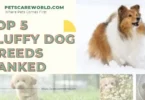Have you ever wondered what the different colors of dog collars and leashes mean? If you are a dog owner, a dog walker, or a dog lover, you may have noticed that some dogs wear colored accessories that indicate something about their personality, behavior, or needs. These color coded systems are designed to help communicate with other people and dogs and to make dog walking more enjoyable and safe for everyone.
In this article, we will explain the meaning behind the most common dog collar colors and how you can use them to interact with dogs respectfully and appropriately. We will also provide some tips on how to choose the best color for your dog and where to find color coded collars and leashes.
What are the benefits of color coded dog collars and leashes?

Color coded dog collars and leashes are a simple and effective way to convey important information about a dog to others. They can help:
- Prevent unwanted or inappropriate approaches from strangers or other dogs
- Avoid potential conflicts or accidents
- Protect the dog’s health and well-being
- Respect the dog’s personal space and preferences
- Educate the public about dog behavior and etiquette
- Promote positive and friendly interactions
Color-coded dog collars and leashes offer several benefits, making them a valuable tool for dog owners and the general public. Here are some detailed advantages:
1 Clear Communication
Color-coded collars and leashes provide a straightforward way to communicate a dog’s needs, temperament, or health status to others. This system helps prevent misunderstandings and ensures that people approach dogs appropriately. For example:
- Red: Indicates the dog needs space and should not be approached.
- Green: Signifies a friendly dog that is open to interaction.
- Yellow: Shows that the dog is nervous and requires gentle handling.
2 Enhanced Safety
Color-coded collars and leashes can help avoid potential conflicts or accidents by clearly signaling a dog’s behavior or health issues. For instance, a dog with a blue collar might be a service dog in training, and people will know not to disturb it.
3 Improved Training
Dogs in training can benefit from color-coded leashes that signal their status. A blue leash can indicate that the dog is undergoing training and should not be distracted. This helps trainers maintain focus and consistency during training sessions.
4 Health Awareness
Certain colors can indicate specific health conditions. For example, a white collar might show that a dog is deaf or blind, alerting others to approach with caution and understanding.
5 Socialization and Interaction
Color-coded collars can facilitate better social interactions between dogs and people. A green collar signals that a dog is friendly and enjoys socializing, making it easier for dog owners to find playmates for their pets.
6 Adoption Awareness
Dogs available for adoption can wear bright yellow collars, making it clear to potential adopters that they are looking for a new home. This can increase the chances of these dogs finding a forever home.
7 Behavioral Management
Dogs with specific behavioral needs can be easily identified. For example, an orange collar might indicate that a dog does not get along well with other dogs, helping to prevent unwanted interactions.
8 Public Education
Using color-coded collars and leashes helps educate the public about dog behavior and needs. It encourages responsible pet ownership and fosters a more understanding and respectful community of dog lovers.
What do the different colors mean?

There are several color coding systems used by dog owners to signify specific health or behavioral issues their dog may have. However, there are some commonly recognized meanings associated with certain colors. Here are the most popular ones:
Red dog collar colors mean

A red collar or leash means that the dog needs more space and may be aggressive or unpredictable. It serves as a warning to others to approach with caution and maintain a safe distance. A red collar or leash may also signal that the dog is in heat and other dogs should not approach it.
Orange dog collar colors mean

An orange collar or leash means that the dog does not get along well with other dogs and may react negatively if approached by one. It signals to other dog owners to keep their dogs away and to respect the dog’s boundaries. An orange collar or leash may also indicate that the dog is a rescue and may have a history of abuse or trauma.
Yellow dog collar colors mean

A yellow collar or leash means that the dog is nervous, anxious, or in need of space. It signals to others to be gentle, give the dog space, and avoid sudden or intrusive approaches. A yellow collar or leash may also indicate that the dog is looking for a new home and is available for adoption.
Green dog collar colors mean

A green collar or leash means that the dog is friendly and approachable. It signifies that the dog is open to interaction, petting, and socializing. A green collar or leash may also indicate that the dog is a service animal and is working or training.
Blue dog collar colors mean
A blue collar or leash means that the dog is a service animal and is working or training. It indicates that the dog is performing a specific task and should not be disturbed or distracted. A blue collar or leash may also indicate that the dog is deaf or blind, and may need special assistance or accommodation.
Purple dog collar colors mean

A purple collar or leash means that the dog has dietary restrictions and should not be fed anything by strangers. It warns others not to give the dog any food or treats, as they may cause allergic reactions or health problems. A purple collar or leash may also indicate that the dog is a therapy animal and is providing emotional support or comfort.
How do you choose the best color for your dog?

If you want to use a color coded collar or leash for your dog, you should consider the following factors:
- Your dog’s personality, behavior, and needs
- The message you want to convey to others
- The environment and situation you and your dog are in
- The availability and affordability of color-coded products
You should choose a color that best reflects your dog’s characteristics and that helps you and your dog communicate with others effectively. You should also be consistent and clear with the color you use, and make sure that it is visible and readable from a distance.
Where can I find color coded collars and leashes?

Many online and offline stores sell color coded collars and leashes, such as these. You can also use colored ribbons or bandanas that follow the same color-coding system and tie them in a prominent spot on your dog’s leash or harness. You can also make your own color-coded accessories using fabric, paint, or embroidery.
Conclusion
Color coded dog collars and leashes are useful tools to help dog owners and dog walkers communicate with other people and dogs and to make dog walking more enjoyable and safe for everyone.
By understanding the meaning behind the different colors and choosing the best color for your dog, you can respect the dog’s personal space and preferences. This will avoid potential conflicts or accidents, protect the dog’s health and well-being, educate the public about dog behavior and promote positive and friendly interactions.







